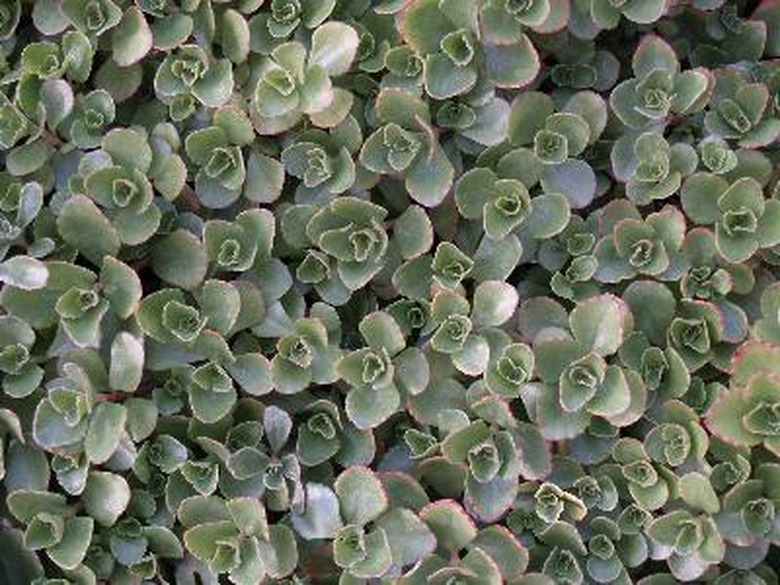Full Sun & Ground Cover Plants
Ground cover plants provide a spreading layer of plant material that can be used in places where grass will not grow. Some ground cover plants spread through their roots, while others put out surface runners. While many plants in this category prefer partial to full shade, it is possible to find types that can grow in full sun.
Evergreen Plants
For continuous foliage coverage throughout the year, choose one of the many evergreen ground cover plants. Evergreen candytuft, or Iberis sempervirens, creeps along the ground by dropping roots from bent-over stems and needs full sun and lots of moisture. Potentilla tridentata, also known as three-tooth cinquefoil, becomes woody and features dark foliage, says the Purdue University Cooperative Extension. It spread quickly and stays below 12 inches in height, with dark and shiny foliage.
- Ground cover plants provide a spreading layer of plant material that can be used in places where grass will not grow.
- While many plants in this category prefer partial to full shade, it is possible to find types that can grow in full sun.
Deciduous Plants
Many deciduous ground covers can handle drier conditions than their evergreen counterparts, especially those adapted to full sun. Crown vetch, also known as Coronilla varia, prefers warm climates, full sun and dry soil. A single plant can cover over 6 feet of bare ground, according to the Purdue University Cooperative Extension. Mock strawberry, or Duchesnea indica, creeps slowly and stays under 2 inches in height. Its leaves are similar to the wild strawberry, but smaller, and it produces yellow flowers. It will spread to both full sun and partial shade areas.
Flowering Plants
Both evergreen and deciduous ground covers can produce flowers in the spring or summer. Rock spray, Oenothera, speciosa has bright green foliage and cup-shaped pink flowers that are larger than the leaves. Commonly known as pinkladies, this ground cover needs full sun and can be used on slopes, says the Ladybird Johnson Wildflower Center. Lyreleaf shade, or Salvia lyrata, can tolerate anything from full shade to full sun. It is a taller ground cover that features a bunch of shorter, grasslike leaves around tall stalks topped with light purple flowers.
- Many deciduous ground covers can handle drier conditions than their evergreen counterparts, especially those adapted to full sun.
- Lyreleaf shade, or Salvia lyrata, can tolerate anything from full shade to full sun.
Sedums
Sedums are a family of succulents that feature fleshy leaves that are often found in brilliant shades of red and green. Most varieties thrive best in full sun, and they often grow low to the ground in creeping patterns. Kamschatka stonecrop, or Sedum kamtschaticum, has dark and glossy leaves that create contrast against lighter colored ground and has low water requirements. Sedum spurium is commonly called dragon's blood due to its bright red flowers and foliage that turns completely red during autumn, according to the Colorado State University Extension.
